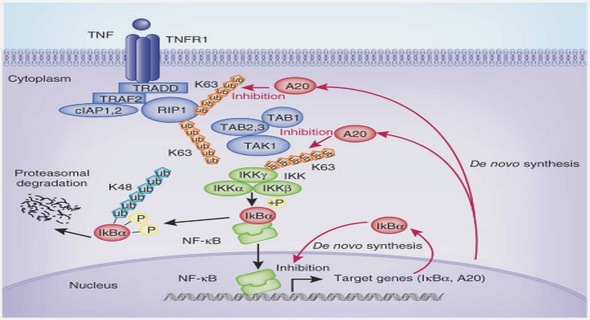Get Complete Project Material File(s) Now! »
The slenderness of the flax stem: an incredibly slender structure in the plant kingdom
‘Slenderness’ is defined as the ratio between the height of a column to its least radius of gyration [95], a definition that can be applied to engineered structures but to plants as well. More commonly for plants, slenderness is defined as the ratio between the maximal height and the basal diameter of the stem [96,97]. Based on literature, flax stems have no identified challenger in terms of slenderness, compared with plants exhibiting the same range of diameter (namely herbaceous plants, also called non-woody plants). In fact, taking an average total height of 1 m (Figure I-7) and a slightly overestimated average basal diameter of 0.003 m [3,98], flax possesses a greater slenderness than herbaceous stems, for example in comparison with 190 other non-woody species studied by Niklas in 1993 [99](Figure I-8).
The comparison has to be interpreted carefully, as flax is a plant cultivated under an optimal context, whereas most other plants are wild ones. Moreover, despite being an herbaceous plant, flax remarkably appears to present a scaling relationship closely resembling woody plants (including trees) rather than non-woody ones (Figure I-8). Thus, the slenderness factor highlights geometric aspects of the plant (namely its length and diameter), making flax an incredibly slender structure among the biological world. This interesting characteristic of flax can be attributed to the internal organization and properties of its composing tissues previously detailed, but the varietal selection work is most likely the main cause that has led to incredibly slender flax plants. In fact, although the varietal selection of food crops has been focusing on breeding dwarf cultivars to decrease their lodging vulnerability [100,101], the flax varietal selection has never intended to reduce the plant height, for profitable reasons. Indeed, on the contrary, reasonably high plants are desired to provide higher yield, as fibers are extracted from the stem.
New varieties of major industrial crops and selection criteria
Among industrial plants, cereals such as rice (Oryza sativa), wheat (Triticum aestivum), rye (Secale cereale), barley (Hordeum vulgare) or maize (Zea mays), have been domesticated then selected over the years. The major goals of their selection are for instance higher grain yields, larger grains, thicker straws or seeds that separate easier from the chaff.
As a first example, rice has been greatly studied regarding the process of selection; it is considered to be the major model system for crop plant research [102]. Indeed, rice, cultivated for over 6,000 years, is currently one of the most cultivated cereals over the world, especially in Asia, and a major source of nutrition for billion people [102,103]. In addition, it has the smallest genome among major food crops, thus provides an easier obtained knowledge that could be extended to wheat, barley or maize [46]. There are over 40,000 varieties of rice, but not many are grown industrially for their high grain yields [46]. Efficiently started in the 1950s, the selection of new rice varieties, especially through semi-dwarf varieties, has enabled an increase of 30% of the rice yield potential [104]. The plant height has been reduced over selection as shorter rice plants exhibit a higher stability to lodging [100,105]. Lodging is defined as the process through which the plant is displaced from its vertical position; it is as critical as when the plant lies on the ground, sometimes permanently [106]. Thus, lodging can diminish grain yields up to 80% and can have other side effects such as including reducing the grain quality or slowing the harvest [106]. Moreover, during the past years, the demand for high-quality rice has also augmented, requiring a varietal selection focusing on another rice characteristic; however, new varieties exhibiting high quality grain do not give high yields and are challenging the rice breeders [104]. Finally, breeders intend to develop varieties having a compromise of high yield, high quality but short enough to prevent lodging. In the case of rice, drought-resistant varieties were also developed [107] to face the more frequent droughts associated with global warming [108]. As the rice losses imputed to diseases are enormous [109], another aim for breeders is to provide selected varieties with an efficient resistance to diseases and insects pests [110].
Focus on new flax varieties and related selection criteria
In the category of industrial crops, flax is also a major plant whose current cultivars are the result of the varietal selection. Selected for two main purposes, namely its seeds and its fibers, a different approach was adopted by breeders according to the expected applications, leading to two distinct groups of cultivars [34]. In addition, it is also known that some cultivars were selected to provide a balance between seed and fiber yields [129]. The present review of the flax selection focuses on the development of fiber varieties exclusively.
Table of contents :
GENERAL INTRODUCTION
CHAPTER I − LITERATURE REVIEW
1. INTRODUCTION
2. GROWTH OF THE FLAX PLANT AND DEVELOPMENT OF ITS FIBERS
2.1. Growth of the plant
2.2. Internal organization of flax biological tissues
2.3. Cell growth of flax fibers
2.4. Cell wall thickening
2.5. Cell wall composition and organization
2.6. The slenderness of the flax stem: an incredibly slender structure in the plant kingdom
3. EVOLUTION OF INDUSTRIAL CROPS AND VARIETAL SELECTION
3.1. New varieties of major industrial crops and selection criteria
3.2. Focus on new flax varieties and related selection criteria
3.3. Lodging of flax: investigations toward a better lodging resistance
4. INFLUENCE OF CULTURAL CONDITIONS AND OF THE ENVIRONMENT ON THE PROPERTIES OF FLAX STEMS AND FIBERS
4.1. Sowing rate and crop canopy
4.2. Wind-induced movements of crop canopies
4.3. Tropisms and plant responses
4.3.1. Thigmotropism and seismotropism
4.3.2. Gravitropism
5. CONCLUSIONS
6. REFERENCES
CHAPTER II − FLAX – FROM THE STEM TO THE FIBER
1. INTRODUCTION
1.1. History of the varietal selection of flax
1.2. Flax: from the plants to composites reinforced by flax fibers
1.3. A plant as an interesting structure and source of bioinspiration
2. MATERIALS AND METHODS
2.1. Plant materials
2.2. Architectural analysis of the stems
2.3. Measurement of single fiber length and diameter
2.4. 3D reconstruction of a fiber bundle
2.5. Scanning electron microscopy
2.6. Atomic Force Microscopy
2.7. Tensile tests on elementary fibers
2.8. Statistical analysis
2.9. Carbon/epoxy sample
3. RESULTS AND DISCUSSION – IMPACT OF THE VARIETAL SELECTION ON PLANT ARCHITECTURE AND FIBER MECHANICAL PROPERTIES
3.1. Morphological study of the stems of different varieties
3.1.1. Stem height
3.1.2. Stem diameter
3.2. Anatomy of the stems of different varieties
3.3. Mechanical properties of the fibers of different varieties
4. RESULTS – ARCHITECTURE OF PLANTS FROM A SINGLE FLAX VARIETY
4.1. Overall morphological study of a stem
4.2. Geometrical and mechanical properties of flax fibers depending on the sampling height along the stem
4.3. Evolution of fiber diameter along length
4.4. Tensile behavior in transverse direction and middle lamellae
5. DISCUSSION – REINFORCEMENT MECHANISMS IN A FLAX STEM
5.1. Anatomical analysis of a stem
5.2. Analysis of elementary fibers and bundle characteristics
5.2.1. Fiber aspect ratio and mechanical properties
5.2.2. Cohesion within a fiber bundle and middle lamellae
5.3. Analogy between specific properties of flax fibers and glass ones
5.4. Analogy between flax stems and composites reinforced by thin plies 100
6. CONCLUSIONS
7. REFERENCES
CHAPTER III − EVOLUTION OF FLAX FIBER PROPERTIES DURING PLANT DEVELOPMENT AND RETTING
1. INTRODUCTION
1.1. The flax fiber: several uncommon features
1.2. From plant development to fiber thickening
1.3. The retting step
2. MATERIALS AND METHODS
2.1. Plant material, culture conditions and retted fibers
2.2. Sample preparation prior AFM PF-QNM measurements
2.3. AFM PF-QNM Measurements
2.4. Tensile tests on elementary fibers from non-retted stems
2.5. Raman spectroscopy
2.6. Statistical analysis
2.7. X-Ray Diffraction
2.8. NMR investigations
3. RESULTS AND DISCUSSION – FIBER PROPERTIES DURING PLANT DEVELOPMENT
3.1. Indentation modulus and morphology of fiber cell walls analyzed by AFM Peak Force QNM measurements
3.2. Tensile tests performed on elementary fibers
3.3. Composition of the cell wall approached by Raman spectroscopy
4. RESULTS AND DISCUSSION – FIBER PROPERTIES DURING RETTING
4.1. Indentation modulus and morphology of fiber cell walls analyzed by AFM Peak Force QNM measurements
4.2. Monitoring of crystallinity degree during retting using X-ray diffraction and NMR analysis
4.3. Investigation of cell wall biochemical structure using NMR
5. CONCLUSIONS
6. REFERENCES
CHAPTER IV − BENDING PROPERTIES OF FLAX PLANTS – ROLE OF THE FIBERS WITHIN THE STEMS
1. INTRODUCTION
1.1. Description of a flax stem
1.1.1. General features and organization
1.1.2. Two main mechanical tissues – Flax fiber crown and xylem
1.2. Bending properties of stems
1.3. Compressive strength of flax-based composites
2. MATERIALS AND METHODS
2.1. Plant materials – Stems and fibers
2.2. Anatomical analysis of the stems
2.3. Specific gravity measurements
2.4. Three-point bending test
2.5. Tensile test on elementary fibers
2.6. Nanotomography
2.7. Unidirectional composites
2.8. Scanning electron microscopy (SEM)
3. RESULTS AND DISCUSSION – LINK BETWEEN BENDING BEHAVIOR OF FLAX STEMS AND FIBER STIFFNESS
3.1. Architecture and morphology of stems
3.2. Analysis of bending characterization conditions
3.3. Characterization of the bending stiffness of flax stems
3.3.1. Stress-strain behavior of stems and xylem cores
3.3.2. Bending stiffness of stems and xylem cores
3.3.3. Apparent bending moduli of stems and xylem cores
3.4. Longitudinal modulus of flax fibers estimated by bending tests
4. RESULTS – COMPRESSIVE STRENGTH OF FLAX FIBERS WITHIN STEMS .
4.1. Mechanical properties of elementary flax fibers
4.2. Failure mechanisms of flax stems during bending tests
4.3. Compressive properties of Bolchoï stems through bending tests
4.4. Compressive properties of flax stems of different varieties
4.5. Compressive properties of xylem cores through bending tests
5. DISCUSSION – CORRELATION BETWEEN COMPRESSIVE PROPERTIES OF UD (FLAX/EPOXY) AND FIBER BUNDLES WITHIN A STEM
5.1. Compressive properties of unidirectional flax/epoxy composites
5.2. First approach to estimate the fiber compressive strength
5.3. Second Approach to estimate the fiber compressive strength
5.4. Is the modest compression strength of flax fibers a problem for living plants?
6. CONCLUSIONS
7. REFERENCES
CHAPTER V − INFLUENCE OF CULTURAL CONDITIONS AND STIMULI ON FLAX STEMS AND FIBERS
1. INTRODUCTION
1.1. Slenderness of plants and mechanical stability
1.2. Plant response to a mechanical stress: case of wind
1.3. Lodging and plant gravitropic response
2. MATERIALS AND METHODS
2.1. Plant materials and measurements
2.1.1. Plant materials for the study of the mechanical stability
2.1.2. Plant materials for the study of the influence of wind
2.1.3. Plant materials for the study of gravitropic reaction
2.2. Anatomical analysis
2.2.1. Samples from living materials
2.2.2. Samples from dried materials
2.3. Three-point bending tests
2.4. Greenhill’s model
2.5. Effect of a gradient in elastic modulus
2.6. Measurements of elementary fiber length
2.7. Tensile tests on elementary fibers
2.8. Statistical analysis
3. RESULTS – SLENDERNESS AND STABILITY OF FLAX PLANTS
3.1. Stem properties and anatomy obtained from living plants
3.2. Bending properties along the stem
3.3. Safety against buckling of a living stem
3.4. Effect of elastic modulus gradient on the stability of a flax stem
4. DISCUSSION – SLENDERNESS AND STABILITY OF FLAX PLANTS
5. RESULTS – CONVENTIONAL VERSUS GREENHOUSE CULTIVATION
5.1. Architectural study of the stems grown outdoor or in greenhouse
5.2. Anatomy of the stems grown outdoor and in greenhouse
5.3. Impact of the type of cultivation on the length of elementary fibers
5.4. Bending properties of the stems
5.5. Influence of the type of cultivation on fiber mechanical properties
6. DISCUSSION – CONVENTIONAL VERSUS GREENHOUSE CULTIVATION
7. RESULTS AND DISCUSSION – PLANT GRAVITROPIC RESPONSE
8. CONCLUSIONS
9. REFERENCES

